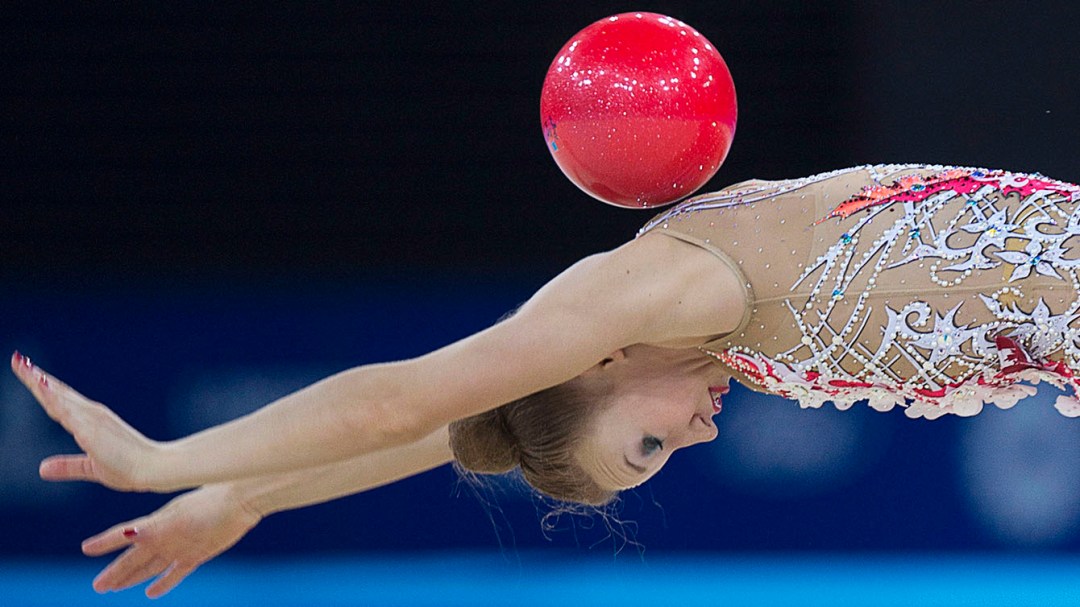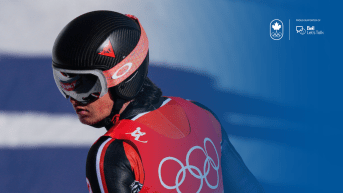Think artistic can’t be athletic? Think again.
Sequins and smiles. Music and makeup. There has always existed the thought that if it’s pretty, then it can’t be a sport.
Hold on a moment while I clear my throat: WHAT?!
It’s a misconception fought every day by figure skaters, synchronized swimmers and rhythmic gymnasts because they make their sports look easy. They don’t look exhausted and strained. They show purposeful emotion. There’s little appreciation for what they do physically, not to mention the brain power it takes to remember complex choreography while performing exceptional elements and making it all look like art.
Let’s start with figure skating:
It’s easy to be ignorant of a sport because you think the scoring is too complicated (It’s really not, but that’s an argument for another time). If that’s your attitude, you’re missing out on more complete figure skating programs requiring more physical strength and stamina than ever before.
Patrick Chan’s jump content is just what the top men were doing at the turn of the millennium, including quad-triple combinations (an astounding seven revolutions in two seconds). But now there is no rest period, no wasted time in a four-and-a-half minute free skate. Instead of long set-ups for the jumps, there are complicated entrances. What were once simple step sequences are now twice as long and highly technical as well as entertaining and timed with the music. The extra energy expended means skaters have to be in great shape to also perform the high value jumps.
And don’t even think about front loading a program. That went out the door when bonus marks began to be awarded for jumps done after the halfway point. Many skaters now backload their programs, performing more jumps when they should be most tired.
But what about ice dance in which they don’t even jump, you say? Even more so than in singles and pairs, these programs have no stoppages. Four minutes of continuous movement, gaining speed through the use of their knees and edges and including increasingly complex lifts. Oh and don’t forget to emote!
https://www.youtube.com/watch?v=AicVw3FzAeU&start=98
And don’t ever say that figure skaters aren’t tough. Would you be able to finish a program after getting a broken and bloody nose from your partner’s elbow on the first element? Meagan Duhamel and Eric Radford did at the 2011 World Championships. Stopping would have led to a scoring deduction, so they sucked it up and kept going for another two-and-a half minutes.
“I could see, I could breathe, I’m not dying, I’ll finish the program and deal with it after,” Radford said at the time.
https://www.youtube.com/watch?v=U2hFIMocz2s&start=74
It’s no wonder that skating a long program has been compared to running a 1500m hurdle race while smiling.
How about synchro?
It’s always been one of the easiest sports to mock. Just ask Martin Short.
But it’s certainly not one of the easiest sports to do. Just ask Marie-Pier Boudreau Gagnon:
“Try to go on a bike, put your heart rate at around 170 and then every 10 seconds hold your breath and sprint. Then take a breath and hold it for another 10 seconds and sprint. After 3 minutes and 30 seconds tell me how you feel. And if you can smile between your breaths, now you understand what synchro is like.”
It takes guts to stick with a sport that in the beginning makes you feel like you’re drowning. But all synchronized swimmers learn to fight the natural panic that comes from being underwater for extended periods of time. These athletes casually admit that they’ve all been to the point of passing out and now have no problem being submerged for 25 seconds, popping up for a couple of seconds to get a breath, and then heading back under the water again.
And just think of the strength it takes to launch a teammate in the air when the only thing to leverage against is water. Touching the pool bottom is a no-no.
Television does not do justice to what these athletes do. They are not static in the pool. They are constantly moving the entire length of it. And just like the biggest part of an iceberg is below the water, that’s where all the hard work is happening in synchro. We just can’t see it. This is where feet, knees, shoulders and elbows collide as teams coordinate for the showstopping lifts. As violent as water polo below, it’s as graceful as dance above.
https://www.youtube.com/watch?v=hmfW0ZJJRtY&start=25
Rhythmic gymnastics is the real deal:
It’s not just dancing with ribbons.
Will Ferrell is most definitely not demonstrative of what rhythmic gymnasts actually do.
Their sport requires strength, endurance, flexibility and dexterity. Lest you think that they perfect a single set of skills, think again. Each of the four apparatus – ribbon, hoop, ball, clubs – have varied physical adjustments that need to be made.
Let’s take the ribbon, which is most typically thought of when it comes to rhythmic gymnastics. It’s a six-metre long piece of satin attached to a 60cm stick. It must always be in motion. So while the gymnast is focused on turning, leaping and tumbling, her arm and shoulder muscles are always working to keep the ribbon from getting tangled, knotted or just falling flat to the floor.
https://www.youtube.com/watch?v=gR7TMoagi2w&start=31
If hand-eye coordination is important in sports such as baseball and football, it is vital in rhythmic gymnastics, where apparatus are tossed high in the air and then often caught blindly after performing multiple elements.
https://www.youtube.com/watch?v=z6kNtHh02rQ&start=10
So basketball players can dribble a ball and make it spin on one finger. Can they do it while performing a back walkover?
And if you can manage to track one apparatus, what would happen if you suddenly had to deal with two?
https://www.youtube.com/watch?v=eTYgO_7QzYY&start=7
These athletes must have the grace and contortion of a ballerina with the precision of a marksman. They must have the flexibility to split their legs beyond 180 degrees. They must have the strength and control to hold one leg high over their head while balancing on the other.
They must also have the stamina to do four routines, each a minute-and-a-half long. But they don’t do each routine just once. Top competitors must be at their best through a qualification round, the individual all-around as well as the apparatus finals.
And keep that smile bright.


